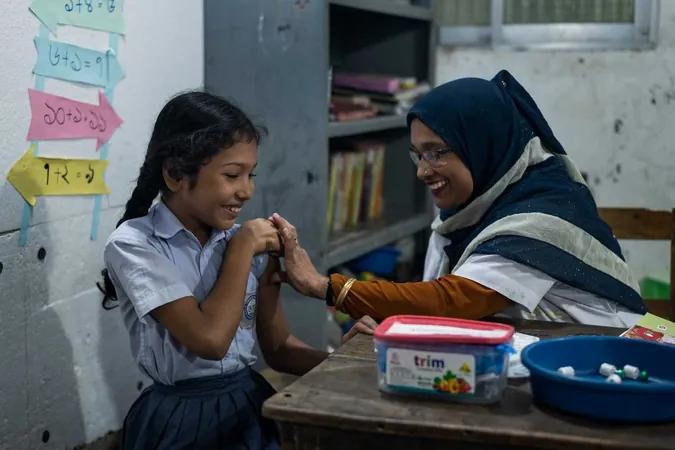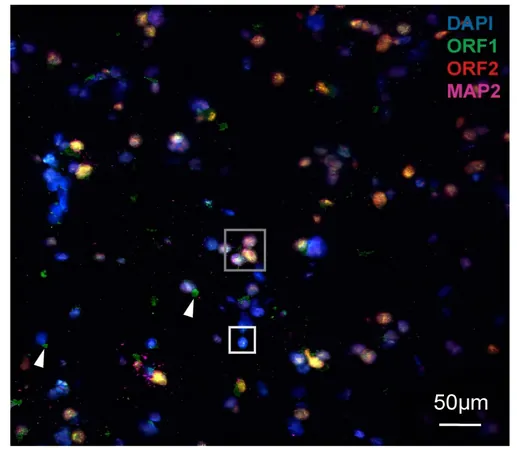
Gavi's Transformative Impact in Asia and the Pacific: Protecting the Next Generation
2025-05-06
Author: Mei
A Lifesaving Legacy Since 2000
Since its launch in 2000, Gavi, the Vaccine Alliance, has achieved a monumental feat: vaccinating over 1.1 billion children worldwide. Among these, more than 633 million young lives in Asia and the Pacific have been saved, avoiding an astonishing 6.1 million deaths in the region alone.
Focus on 'Zero-Dose' Children
As Gavi strides into the future, its primary mission is to protect 'zero-dose' children—those who have not received even a single vaccine. As of late 2023, there are approximately 3 million such children in Asia and the Pacific, often found in marginalized communities plagued by poverty, conflict, and systemic inequalities.
To combat this crisis, Gavi collaborates with local governments, civil society organizations, community health workers, and the private sector. Their strategy is multi-faceted, encompassing community outreach, data-driven identification of unvaccinated children, and the application of innovative technologies to strengthen healthcare systems.
Economic Benefits and Sustainability Efforts
The economic impact of Gavi’s immunization programs in supporting countries is staggering, generating about $250 billion in benefits over the past 20 years. The return on investment is unparalleled—up to $54 for every dollar spent in low- and middle-income nations.
Gavi’s co-financing model promotes country ownership, with Asia and Pacific nations contributing over $563 million since 2008 toward vaccine procurement. Remarkably, eight out of 18 Gavi-supported countries have transitioned to full self-financing, including massive nations like India and Indonesia, which have now become Gavi donors. This commitment is essential for the long-term sustainability of vaccination programs.
Addressing Climate Change and Health Resilience
The densely populated Asia-Pacific region is highly susceptible to emerging diseases and pandemics, exacerbated by climate change. This poses severe risks as climate disruptions alter disease patterns and undermine immunization efforts.
Diseases such as malaria and dengue threaten to escalate with rising global temperatures. In its upcoming strategic plan for 2026-2030, Gavi will prioritize climate adaptation strategies, aiming to immunize another 500 million children, fortifying health systems against potential outbreaks of climate-sensitive diseases like cholera.
Expanding the Fight Against Cervical Cancer
Cervical cancer presents a severe public health challenge in Asia and the Pacific, where screening and treatment access is limited. Since initiating its HPV vaccination program in 2017, Gavi has celebrated the immunization of over 4.7 million girls, protecting them against this preventable disease.
With a goal to reach over 86 million girls by 2025, Gavi aims to avert 1.4 million future cervical cancer deaths. Looking further ahead, their vision involves vaccinating 120 million girls between 2026 and 2030, promising to save over 1.5 million lives.
Conclusion: A Future of Health and Resilience
Gavi’s unwavering commitment to health equity and vaccination in Asia and the Pacific is paving the way for a healthier, more resilient generation. As we move forward, the focus on immunization, especially among marginalized populations, remains vital for safeguarding public health and fostering sustainable development.



 Brasil (PT)
Brasil (PT)
 Canada (EN)
Canada (EN)
 Chile (ES)
Chile (ES)
 Česko (CS)
Česko (CS)
 대한민국 (KO)
대한민국 (KO)
 España (ES)
España (ES)
 France (FR)
France (FR)
 Hong Kong (EN)
Hong Kong (EN)
 Italia (IT)
Italia (IT)
 日本 (JA)
日本 (JA)
 Magyarország (HU)
Magyarország (HU)
 Norge (NO)
Norge (NO)
 Polska (PL)
Polska (PL)
 Schweiz (DE)
Schweiz (DE)
 Singapore (EN)
Singapore (EN)
 Sverige (SV)
Sverige (SV)
 Suomi (FI)
Suomi (FI)
 Türkiye (TR)
Türkiye (TR)
 الإمارات العربية المتحدة (AR)
الإمارات العربية المتحدة (AR)